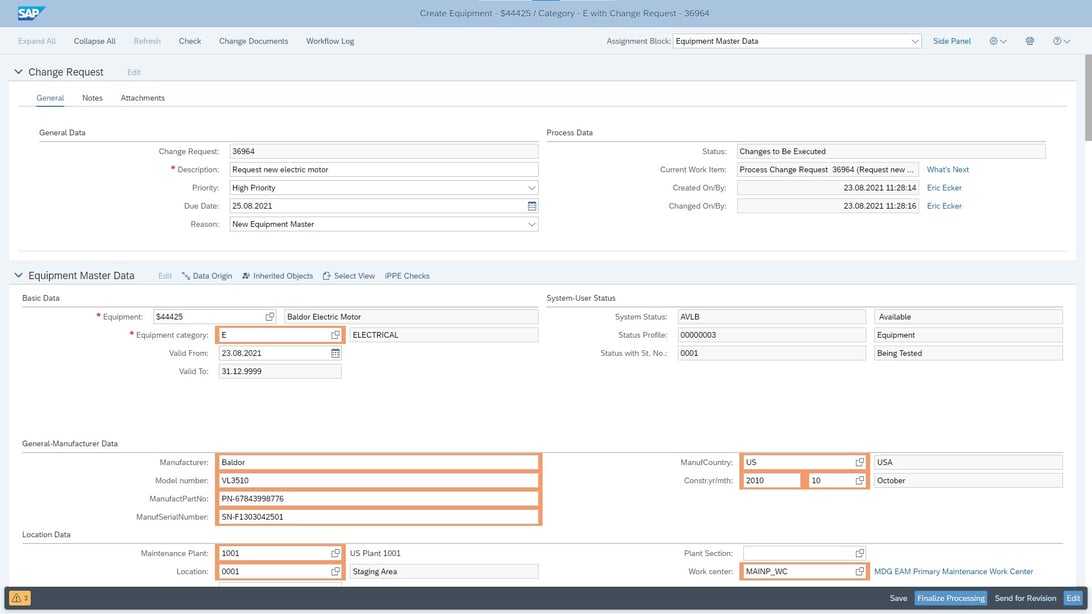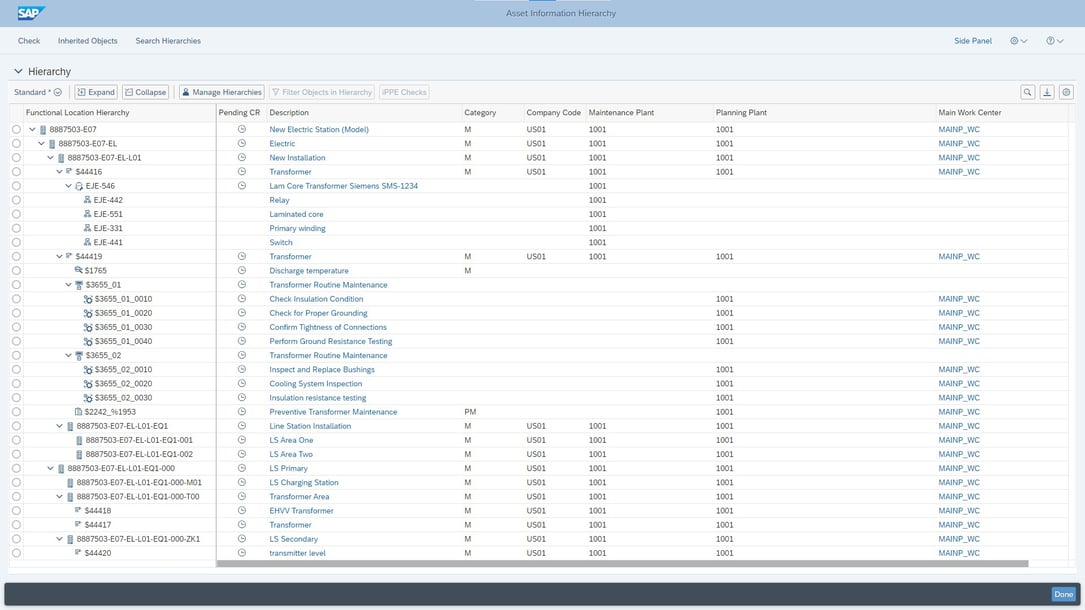Digitalization is the topic of the decade. And data is undoubtedly the critical fuel to drive any digital initiative. This holds especially true for the so-called asset intensive industries like oil and gas, utilities, mining, chemicals, pharmaceuticals, or the defense industry. The challenge in these industries is that you need an up-to-date, correct, redundancy free, holistic representation of your physical assets that operate daily in your global plants. At Utopia, we have developed an intelligent data strategy to help these organizations to represent their physical assets as a digital twin in their business-critical system like SAP ERP. Our “Build – Fix – Sustain” methodology of course relies on the key pillars of people, process, and technology. Today I want to highlight the technology section of this methodology.
SAP Master Data Governance for Enterprise Asset Management
A common approach in the industry to tackle outdated, unstandardized, duplicated, wrong or even missing asset data is to recurrently initiate data projects and engage experts like us at Utopia to clean and enrich as well as standardize our customers’ data. We call this the “Fix” phase. As valid as this approach is, the world keeps on changing and with that your data is changing. Plant shutdowns, turnarounds and continuous planned and unplanned maintenance is changing your asset data structures day by day.
So, there is a need to sustain a high level of quality – no matter if it is the creation of a new asset or due to the ever-changing environment. The technical answer to this challenge is applying SAP Master Data Governance (MDG) for Enterprise Asset Management (EAM) and the Asset Information Workbench (AIW) to manage the entire life cycle of your asset data and to always have a correct and up-to-date digital representation of your physical assets in your critical operational systems.
Key Features and Capabilities of MDG EAM
SAP Master Data Governance is a holistic data management and governance platform to manage the whole life cycle of your data assets across your organization.
Let’s look at some features. MDG:
- Is a complete workflow, rules-driven data orchestration and data quality solution.
- Is a framework (i.e., it can be adapted to your organizational, process and user needs).
- Has mass data creation and change capabilities.
- Supports all core master data objects (Business partner, Finance, Material, Assets).
- Includes a staging area (i.e., Virtual area to maintain master data before going operational).
- Has web-based user interfaces for search, data entry, consolidation, monitoring.
- Is built with workflow- and rule-based governance processes with integrated duplicate checks.
- Distributes to SAP systems and non-SAP systems (Key-/Value Mapping).
- Incorporates process analytics, monitoring and auditing.
In addition to the MDG standard objects like customer, vendor, finance, or material we have developed the domain MDG for Enterprise Assets for asset intensive organizations. The key technical objects that can be governed are for example:
- Equipment
- Functional location
- Bill of material
- Maintenance plan and maintenance item
- Workcenter
- Task list
- Measuring Point
A typical end user screen looks like this:

MDG allows you in a single collaborative solution to manage the full life cycle of your critical asset data. You can avoid the typical pitfalls of using homegrown unreliable approaches like Excel and Outlook to create, update, enrich, validate, and approve critical data spanning your organization with various experts like engineering, sales, finance contributing to a full data representation of your physical assets.
Simplifying and Standardizing Structured and Unstructured Asset Data
Furthermore, MDG can not only manage the structured data of your assets, but also the so-called unstructured information. Especially in maintenance, lots of critical data resides in documents like engineering drawings, repair manuals, safety notices, spare part information and many more. These documents can be attached to the MDG data management process and thus gives end users a single place to find all information and not wasting their time to look for information in various information silos.
As the creation or the update of a technical asset involves lots of experts, a built-in workflow engine takes care of sending the right information to the right expert at the right point in time. Workflows coordinate the sequence and processing of critical master data from the requestor to the experts entering information, to the subject matter experts enriching specific information (e.g. equipment classes and characteristics). It continues all the way to the personnel approving the final data record so that it can be syndicated out to the connected operational systems using the accurate information for downstream processes. An important part is validating information and automating the process of data entry. This is managed by the business rules framework within MDG. Besides defining critical input fields as being mandatory, business rules can check the validity of a data entry automatically and can also correct it.
Asset Information Workbench: Governing Asset Structures
Now that we have investigated key capabilities of MDG, there is — especially for asset intensive customers — the need to govern complete asset structures instead of individual objects like equipment, functional location, maintenance plans or task lists. And this is exactly the reason why we have developed the Asset Information Workbench (AIW).
AIW sits on top of MDG and allows the end user to govern complete asset structures. As an example, I want to take an electric transformer station. This asset structure consists of a deep structure of functional locations, equipment, sub equipment as well as related spare part lists (bill of materials), measuring points as well as task lists with instructions for the maintenance experts.
The digital representation of the transformer station looks like this in Asset Information Workbench:

You can now visually inspect and maintain the whole hierarchy, but also as you are used to in MDG, drill down to each object and the details to maintain the individual attributes. Furthermore, you have all capabilities at your fingertips that I described earlier such as: management of the whole workflow, business rules checking, mandatory fields, and individual screen customizations. The Asset Information Workbench allows you to also mass change data.
Streamline Your Data Governance: Leverage Template Structures
A key feature of AIW is to define so-called template structures for assets. Take the example of our transformer station. Having defined a standardized model of a transformer including the whole functional location structure as well as the equipment structure (including the associated bill of materials and maintenance plans), it is now easy to create a new instance of this transformer. A single click copies the complete template structure into a new instance.
Technically speaking, a so-called Multi Object Change Request (MOCR) is being created. The users can optionally adapt the MOCR structure to their needs (e.g., add or remove objects, change values, drag and drop objects across the hierarchy etc.) or take it “as is”. The next step is to run it through the pre-defined workflows including approving the whole structure. After final approval the complete structure gets transferred to the connected operational systems like an S/4HANA ERP system.
This approach reduces dramatically the time and effort to get critical asset master data into your operational systems. The template approach (including all structural elements, validated information and standard naming conventions) ensures that standardized, validated, and enriched data is being used in your operational processes.
In summary, maintaining a central asset registry with accurate, reliable, and up-to-date information in asset intensive industries is not an easy endeavor. It surely requires an intelligent data strategy, the necessary expert resources but also smart software solutions. Today we highlighted the SAP Master Data Governance platform as well as the Asset Information Workbench. This solution gives you a completely integrated, holistic approach to managing the complex life cycle of enterprise assets. From requesting individual objects to fully fledged out asset structures the complete process from enriching, validating, approving, and finally replicating the trusted information out to the connected operational systems is performed in a single solution.
Feel free to contact me at eecker@utopiainc.com in case of questions or the need for more information. I am also happy to schedule an interactive session to discuss your requirements and to demonstrate our solution capabilities. More information can also be found here.




